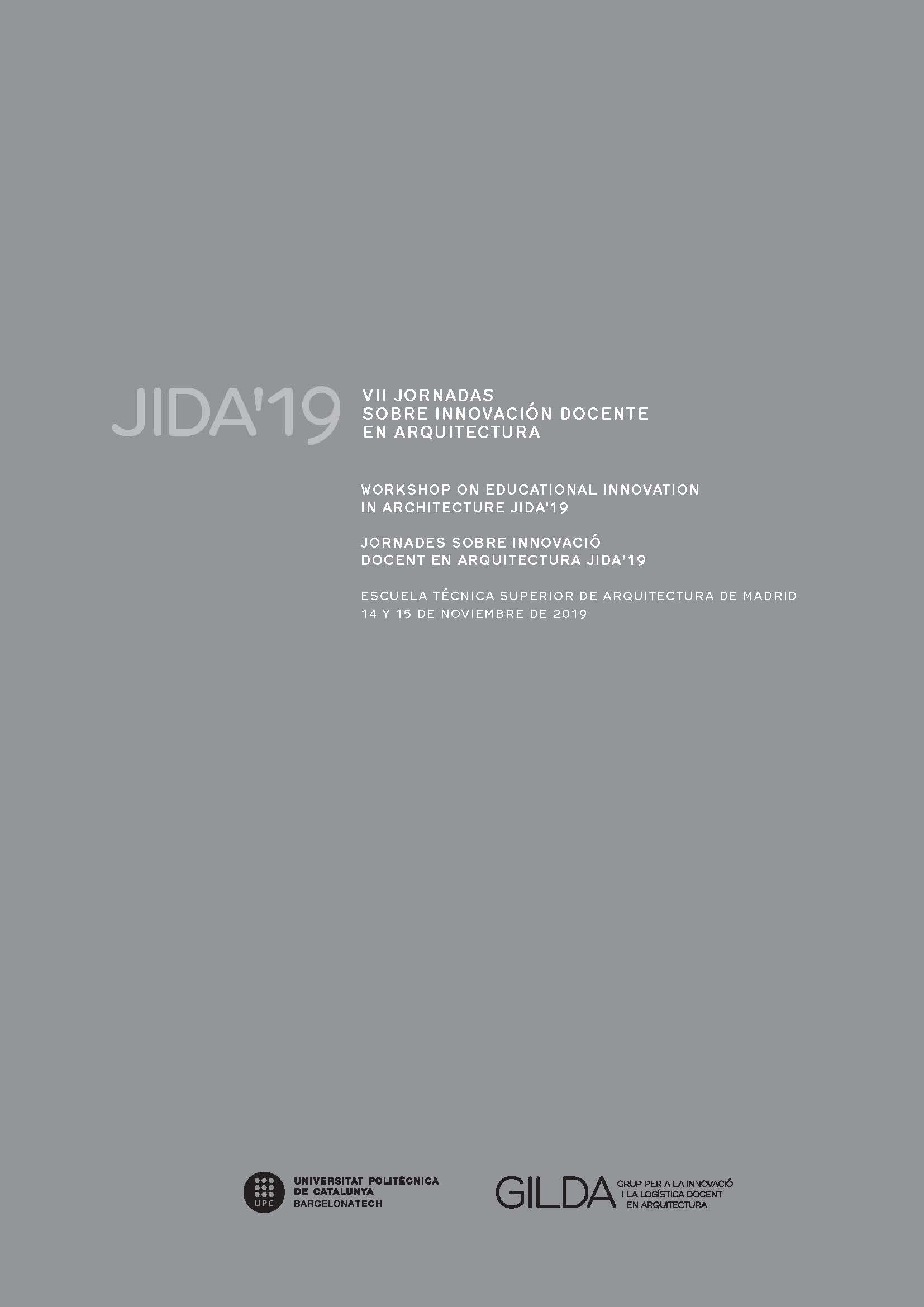The construction of Cañada Real Social Center as instrument for training and integration
DOI:
https://doi.org/10.5821/jida.2019.8422Abstract
The paper outlines the innovative use of the construction process of a public social equipment as a training tool on issues related to the social production of habitat. The equipment is the center for social and community of Cañada, built by Recipes Urban Areas and promoted by the Commissioner for the Cañada Real Galiana of Madrid City Council. During the construction process (October 2018 – June 2019) various academic activities were scheduled with architectural students of the University of Alcalá following the objectives of Learning-Service (ApS). An experience that we find noteworthy three aspects: Positive linkage between a public university with social, technical and political actors; Development of an ApS initiative with formative and social ends; Dynamization and social education generated in the field of architecture in collectives unrelated to discipline.
References
ANECA. (2005). Libro Blanco. Estudios de Grado de Arquitectura. Madrid: Agencia Nacional de Evaluación de la Calidad y Acreditación.
ARNÃEZ, J. (2017). Encuentro ANECA en el horizonte 2020: una Agencia de Evaluación al Servicio de la Comunidad Universitaria Española. Santander: Universidad Internacional Menéndez Pelayo. 11-12/09/2017. <https://tinyurl.com/yyar6h53> [Consulta: 27 de agosto de 2019]
AYUNTAMIENTO DE MADRID. (2017). Fondos de reequilibrio territorial. <https://tinyurl.com/y2xh3e8p [Consulta: 27 de agosto de 2019]
AYUNTAMIENTO DE RIVAS VACIAMADRID. (2017). Crece el efecto llamada en la Cañada Real. <https://tinyurl.com/yxtfb6zm> [Consulta: 10 de septiembre de 2019]
CAM. (2017). Pacto Regional por la Cañada Real Galiana. Comunidad de Madrid. <https://tinyurl.com/y26ws8eb> [Consulta: 27 de agosto de 2019]
GOYCOOLEA-PRADO, R. y NÚÑEZ-MARTÃ, P. (2017). “De meta a objetivo. La nueva mirada de la habitabilidad [básica] en los Objetivos de Desarrollo Sostenible.†En: R. Goycoolea-Prado y Manuel MegÃas-Rosa (editores). Objetivos del Desarrollo Sostenible. Una mirada crÃtica desde la Universidad y la Cooperación al Desarrollo. Servicio de Publicaciones Universidad de Alcalá, p. 131-146. <https://tinyurl.com/y24whtf2> [Consulta: 27 de agosto de 2019]
ICI (2015). Infancia, Familia y Convivencia en Cañada Real Galiana. Madrid: Proyecto de intervención social intercultural. <https://tinyurl.com/yykhdbhm> [Consulta: 27 de agosto de 2019]
LIZANCOS, P. (2010). “La formación para la cooperación al desarrollo en hábitat y arquitecturaâ€. Jornadas de Arquitectura y Cooperación al Desarrollo. Sevilla: Escuela Técnica Superior de Arquitectura, p. 77-84.
MARTÃN, J. y DÃAZ, V. (2017). Explorando caminos de innovación educativa en arquitectura y urbanismo. Hábitat y Sociedad, n.º 10, p. 113-128. <http://dx.doi.org/10.12795/HabitatySociedad.2017.i10.07> [Consulta: 27/08/2019]
ORTIZ, E. (2012). Producción social de la vivienda y el hábitat, México: HIC, Hábitat International Coalition.
RECETAS URBANAS. (2019). Centro Sociocomunitario Cañada Real. [Facebook] <https://tinyurl.com/yyazjy2z> [Consulta: 27 de agosto de 2019]
UNECE. (2012). Learning for the future: Competences in Education for Sustainable Development. United Nations Economic Commission for Europe (UNECE) Steering Committee on Education for Sustainable Development. Acuerdo de 07 de abril de 2011. <https://tinyurl.com/y5jgdttm> [Consulta: 27 de agosto de 2019]
UN-HABITAT. (2015). Viviendas y mejoramientos de asentamientos precarios. Programa de Naciones Unidas para los Asentamientos Humanos. <https://tinyurl.com/y2v7kjmw> [Consulta: 27 de agosto de 2019]
UN-HABITAT. (2019). Urban Report 2018. Programa de Naciones Unidas para los Asentamientos Humanos. <https://tinyurl.com/yxpvmlmc> [Consulta: 27 de agosto de 2019]



















